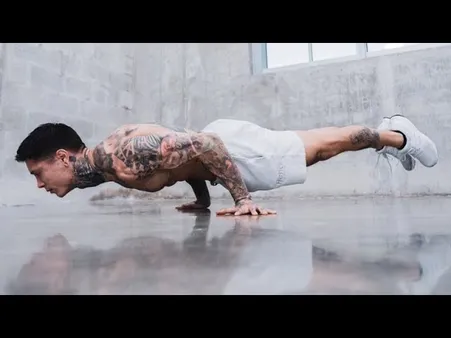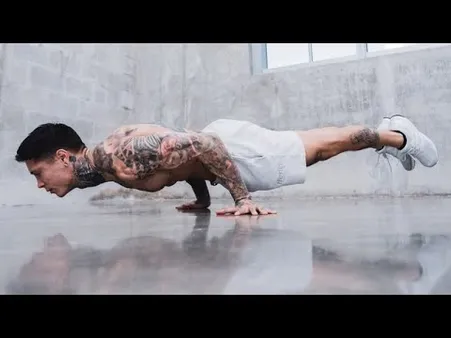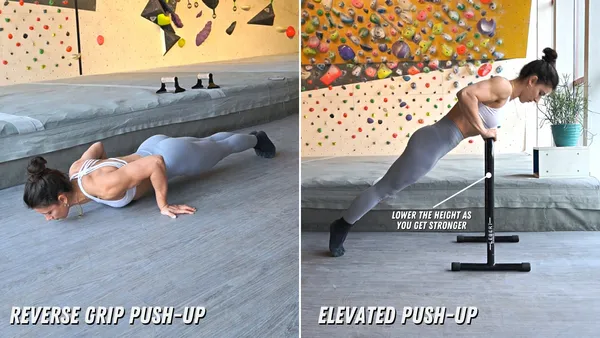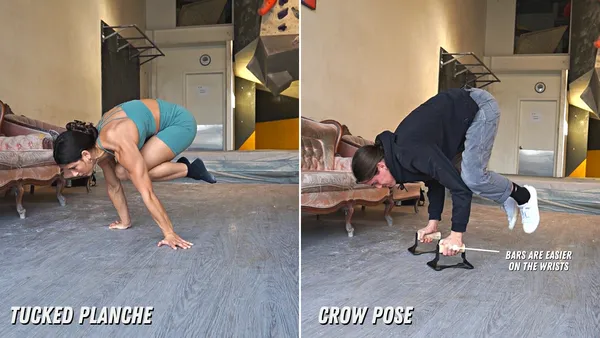Table of Contents
calisthenics holds are a great way to build strength, endurance, and flexibility. They can be done anywhere, with no equipment needed, making them a convenient and accessible form of exercise. Whether you're a beginner or a seasoned athlete, calisthenics holds can be tailored to your fitness level. If you're new to calisthenics, start with shorter holds and gradually increase the duration as you get stronger. With regular practice, you'll be amazed at how quickly your strength and endurance improve. So what are you waiting for? Give calisthenics holds a try today and see the amazing benefits for yourself! You can find more information about calisthenics holds and other bodyweight exercises on our website, Kizworld.
Calisthenics Holds: The Ultimate Guide to Master Bodyweight Mastery
I. Table of Calisthenics Holds
| Type | Muscles Worked | Benefits |
||---|---|
||Push-Up Hold | Chest, Triceps, Shoulders | Strengthen upper-body and improve posture|
||Front Plank | Core, Hips, Back | Build core strength and stability|
||Side Plank | Obliques, Quads, Glutes | Strengthen and stabilize lateral muscles|
||Superman Hold | Back, Shoulders, Glutes | Improve posture and strengthen lower back|
||Pistol Squat Hold | Quads, Glutes, Calves | Develop leg strength and balance|
||Wall Sit | Quads, Hamstrings, Glutes | Improve endurance and lower body strength
II. Types of Calisthenics Holds
Calisthenics holds are a great way to build strength, endurance, and flexibility. They can be done anywhere, with no equipment necessary. There are many different types of calisthenics holds, each with its own benefits.
Static Holds
Static holds are exercises where you hold a position for a period of time. This can be done with any bodyweight exercise, such as a plank, push-up hold, or squat hold. Static holds are great for building strength and endurance.
Dynamic Holds
Dynamic holds are exercises where you move through a range of motion while holding a position. This can be done with exercises such as jumping jacks, burpees, or mountain climbers. Dynamic holds are great for building strength, endurance, and power.
Isometric Holds
Isometric holds are exercises where you hold a muscle contraction against an immovable object. This can be done with exercises such as wall sits, handstands, or hanging leg raises. Isometric holds are great for building strength and power.
Type of Hold | Exercise Examples | Benefits |
|---|---|---|
Static Hold | Plank, push-up hold, squat hold | Building Strength and Endurance |
Dynamic Hold | Jumping jacks, burpees, Mountain Climbers | Building Strength, Endurance, and Power |
Isometric Hold | Wall sits, handstands, hanging leg raises | Building Strength and Power |
No matter what your fitness level, there is a calisthenics hold that is right for you. Start slowly and gradually increase the duration and intensity of your holds as you get stronger. With regular practice, you will see significant improvements in your strength, endurance, and flexibility.Read more about Handstands and balancing skills with Calisthenics
Weighted Holds
Weighted holds are calisthenics holds that are performed with added weight. This can be done by wearing a weighted vest or by holding weights in your hands or feet. Weighted holds are great for building strength and power.
- These holds can be done with any bodyweight exercise.
- The holds can be performed for different durations of time.
- Calisthenics holds can be done at a gym or at home.
- A few different types of calisthenics holds include the wall sit, handstand, and pull-up.
Calisthenics holds are a versatile and effective way to improve your fitness. They can be used to build strength, endurance, power, and flexibility. With regular practice, you will see significant improvements in your overall fitness.
Discover how to increase the difficulty of your Calisthenics exercises?
Types of Calisthenics Holds
III. Benefits of Calisthenics Holds
Improved Body Composition
Calisthenics holds can help you burn calories, build muscle, and improve your overall body composition. This is because these movements require you to engage multiple muscle groups at once, which helps you burn more calories in a shorter amount of time. Additionally, calisthenics holds can help you build muscle mass by increasing the time your muscles are under tension.
Type | Benefits |
|---|---|
Push-Up Hold | Strengthens chest, triceps, and shoulders |
Front Plank | Strengthens core and improves posture |
Increased Flexibility and Mobility
Calisthenics holds can also help you improve your flexibility and mobility. This is because these movements require you to move through a full range of motion. By regularly performing calisthenics holds, you can improve your range of motion and reduce your risk of injury.
Related Post: The Top Calisthenics Competitions and Challenges
Enhanced Athletic Performance
Calisthenics holds can also help you enhance your athletic performance. This is because these movements can help you improve your strength, endurance, and coordination. By incorporating calisthenics holds into your training routine, you can improve your overall fitness and athleticism.
Related Post: How to Train Like a Calisthenics Pro
Reduced Risk of Injury
Calisthenics holds can also help you reduce your risk of injury. This is because these movements can help strengthen your muscles and connective tissues, which can help to prevent injuries. Additionally, calisthenics holds can help to improve your balance and coordination, which can also help to reduce your risk of injury.
Related Post: The Best Calisthenics Exercises and Variations
Benefits of Calisthenics Holds
IV. How to Perform Calisthenics Holds
Calisthenics holds are a great way to build strength, endurance, and flexibility. They can be done anywhere, with no equipment needed. Here are some tips on how to perform calisthenics holds:
- Start with a few seconds and gradually increase the hold time as you get stronger.
- Focus on maintaining good form throughout the hold.
- Breathe deeply and relax your body.
- If you feel any pain, stop the hold and consult with a doctor.
Hold | Muscles Worked | Benefits |
|---|---|---|
Push-Up Hold | Chest, triceps, shoulders | Strengthens upper-body and improves posture |
Front Plank | Core, hips, back | Builds core strength and stability |
Side Plank | Obliques, quads, glutes | Strengthens and stabilizes lateral muscles |
Superman Hold | Back, shoulders, glutes | Improves posture and strengthens lower back |
Pistol Squat Hold | Quads, glutes, calves | Develops leg strength and balance |
Wall Sit | Quads, hamstrings, glutes | Improves endurance and lower body strength |
Here are some related posts that you may find helpful:
- How to Do a Muscle-Up
- The Best Calisthenics Gifts and Accessories
- The Best Calisthenics Quotes and Motivation
How to Perform Calisthenics Holds
V. Tips for Beginners
Calisthenics holds are an excellent way to build strength and flexibility. But if you're starting out, it's important to start with the basics and gradually work your way up to more challenging positions.
To start with, find a few simple holds that you can hold for 30-60 seconds at a time. As you get stronger, you can increase the duration of your holds and begin to add variations.
Exercise | Instructions | Benefits |
Shoulder taps | Stand with your feet shoulder-width apart and your hands behind your head. Lift your hands up and tap your shoulders, then lower them down again. Repeat for 10-15 reps. | Improves shoulder mobility and stability |
Hip bridges | Lie on your back with your knees bent and your feet flat on the floor. Lift your hips up towards the ceiling, squeezing your glutes at the top. Lower back down and repeat for 10-15 reps. | Strengthens the glutes, hamstrings, and core |
Plank | Start in a push-up position, but with your forearms on the ground instead of your hands. Hold this position for 30-60 seconds. | Strengthens the core, back, and shoulders |
Squat holds | Stand with your feet shoulder-width apart and your toes turned out slightly. Lower your body down into a squatting position, keeping your chest up and your knees behind your toes. Hold this position for 30-60 seconds. | Strengthens the quads, glutes, and hamstrings |
Calf raises | Stand with your feet flat on the floor. Slowly lift up onto your toes, then lower back down. Repeat for 10-15 reps. | Strengthens the calves |
As you progress, you can start to add more challenging variations to your holds. For example, you could try holding a push-up position with your feet elevated on a bench or chair. Or, you could try holding a plank while moving your legs in and out like a scissor kick.
- How to Build Muscle and Strength with Calisthenics
- How to Train Like a Calisthenics Pro
- How to Do a Push-Up
- How to Do a Squat
- How to Do a Plank
With patience and practice, you'll be able to master a variety of calisthenics holds and build up your strength and flexibility.
Tips for Beginners
VI. Conclusion
Calisthenics holds are a great way to improve your strength, flexibility, and endurance. They are also a convenient and affordable way to get a full-body workout. If you are looking for a challenging and effective way to get in shape, calisthenics holds are a great option. Be sure to start slowly and gradually increase the difficulty of your holds as you get stronger. And don't forget to warm up before you start and cool down afterwards.